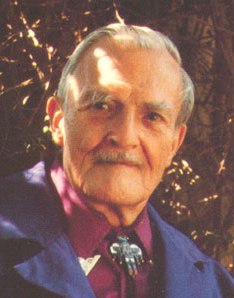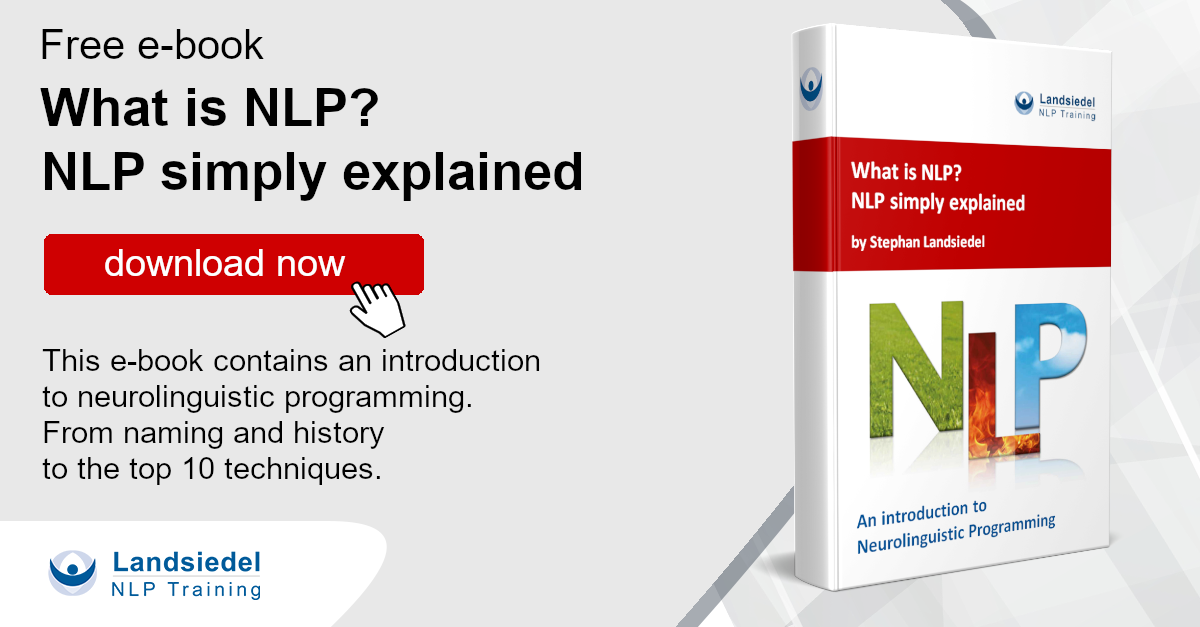Landsiedel NLP Training →
NLP →
Milton Erickson
Milton Erickson - Master of hypnosis or hypnotherapy

- Milton Erickson (5 December 1901 in Nevada; † 25 March 1980)
- American psychiatrist and hypnotherapist
- Has had a decisive influence on modern hypnotherapy
- Model for hypnosis in NLP
Life and work of Dr. Milton H. Erickson
Milton H. Erickson was born on 1901, the second of nine children of Albert and Clara Erickson. His father was a child of Norwegian immigrants, his mother came from an old-established family from New England.
At the age of five his family moved to Lowell, Wisconsin, where he attended primary school and then high school in nearby Wishfield. He suffered from dyslexia. His nickname then was "Dictionary", which was due to his lack of understanding of the dictionary. So he always read the dictionary from the beginning when he was looking for a term. For a long time he was considered "retarded". He was apparently able to overcome his dyslexia by practising seeing difficult letters in hallucination in front of him.
Shortly after finishing high school, Erickson contracted polio in 1919. He fell into a coma, and at first it seemed that he would not survive the disease. Three days later he regained consciousness, completely paralysed. Later he sat in a rocking chair, unable to move. The intense desire to look out a window caused the rocking chair to move slightly. This ideomotor experience motivated him to keep on practising. Through further hallucinatory performances he managed to re-integrate his paralyzed muscles. After almost a year he had made it, was able to walk on crutches and attended the University of Wisconsin. However, against the doctor's advice to rest, he embarked on a now legendary 1,200-mile canoe trip on the Mississippi. During this trip he regained enormous physical strength. Two years later he was able to walk again without crutches, only a limp on his right side remained.
In his second year at university he came into contact with hypnosis. He was fascinated by the possibilities, practiced incessantly, developed different techniques and explored the possibilities of human influence. Contrary to the prevailing doctrine at the time, Erickson developed individualised methods.
- He married for the first time in 1925. Three children were born from this marriage.
- 1928 he completed his studies with a Master of Arts (M.A.) in Psychology and a Doctor of Medicine (M.D.) From 1930 to 1934, he held various positions up to senior psychiatrist at Worcester State Hospital in Massachusetts. Here he was able to continue his research on hypnosis and its possible applications.
- 1935 the marriage was divorced. A short time later he met his later wife Betty. The wedding was in 1936 and from this marriage five more children were born.
- 1939 he received his licence to practise as a specialist in psychiatry. From 1934 to 1948 he was a full professor of psychiatry at the medical faculty of Wayne State University in Detroit, Michigan.
- In 1947 he suffered an injury after a bicycle fall. Because of the risk of tetanus infection and despite his known allergic reaction to the vaccine, Erickson had himself vaccinated. The result was an anaphylactic shock that he barely survived. As a result, he developed a severe allergy to pollen, which forced him to move to the milder climate of Phoenix, Arizona, where he opened a private practice. Other allergies to house dust and various foods occurred. He therefore ran his practice directly from home.
- 1953 he fell ill again with polio associated with muscular dystrophy. He went to Maryland. However, as far as he was able, he continued his extensive writing activities and lecture tours. During this time he worked intensively with Jay Haley, Gregory Bateson, Margaret Mead, Lawrence Kubie and John Weakland.
- In 1957, Erickson founded the American Society of Clinical Hypnosis and became its chairman. In 1958 he founded the American Journal of Clinical Hypnosis, which he published until 1968.
- Due to his increasingly deteriorating state of health, he gave up his lecture and travel activities in 1969; in 1974 he also gave up his private practice. From 1976 he fell ill for a third time with polio, with muscular atrophy and multiple pains. After that he had to use a wheelchair and was paralysed on one side of his face.
- On 25 March 1980, Milton Erickson died at his home in Phoenix.
Performances
The unconsciousness to which the illness brought him later called the beginning of his interest in trance states. Erickson used the period of convalescence, during which medicine gave him little hope of complete recovery, to practice partial dissociations.
It is thanks to Erickson that hypnosis has been used more in psychotherapy again, after it had been pushed into the background for a long time by Sigmund Freud's rejection. He developed a new approach. This emphasises the individuality of each client/patient and consequently the need to find the right approach and approach for everyone. This approach stood in contrast to the standardised and authoritarian methods that were prevalent until the 1950s and 1960s. Erickson also stresses the positive role of the unconscious. Unlike Freud, Erickson sees the unconscious as an inexhaustible resource for creative self-healing. The unconscious is the hoard of barely used human experiences. Erickson's approach aims to expand the ability of the unconscious, which is limited by rigid schemata and thought patterns, by allowing the hypnotist to use special verbal and non-verbal techniques to enable the unconscious to take the lead. At the same time the consciousness is enabled to accept and integrate the unconscious self-healing powers and creative resources.
Erickson had an enormous impact on the entire therapeutic community and his posterity. He influenced Jay Haley, Paul Watzlawick, John Weakland and with them the entire Palo Alto Group, influenced the family therapy which was in its infancy at the time and many schools of systemic therapy, most notably the solution-focused approach of Steve de Shazer and Insoo Kim Berg, the Provocative Therapy of Frank Farrelly and the Systemic Structural Constellations of Insa Sparrer and Matthias Varga von Kibéd. The founders of NLP, Richard Bandler and John Grinder, studied and copied his technique - they described the way Erickson masterfully worked with hypnotic language in his own model, the Milton Model.


